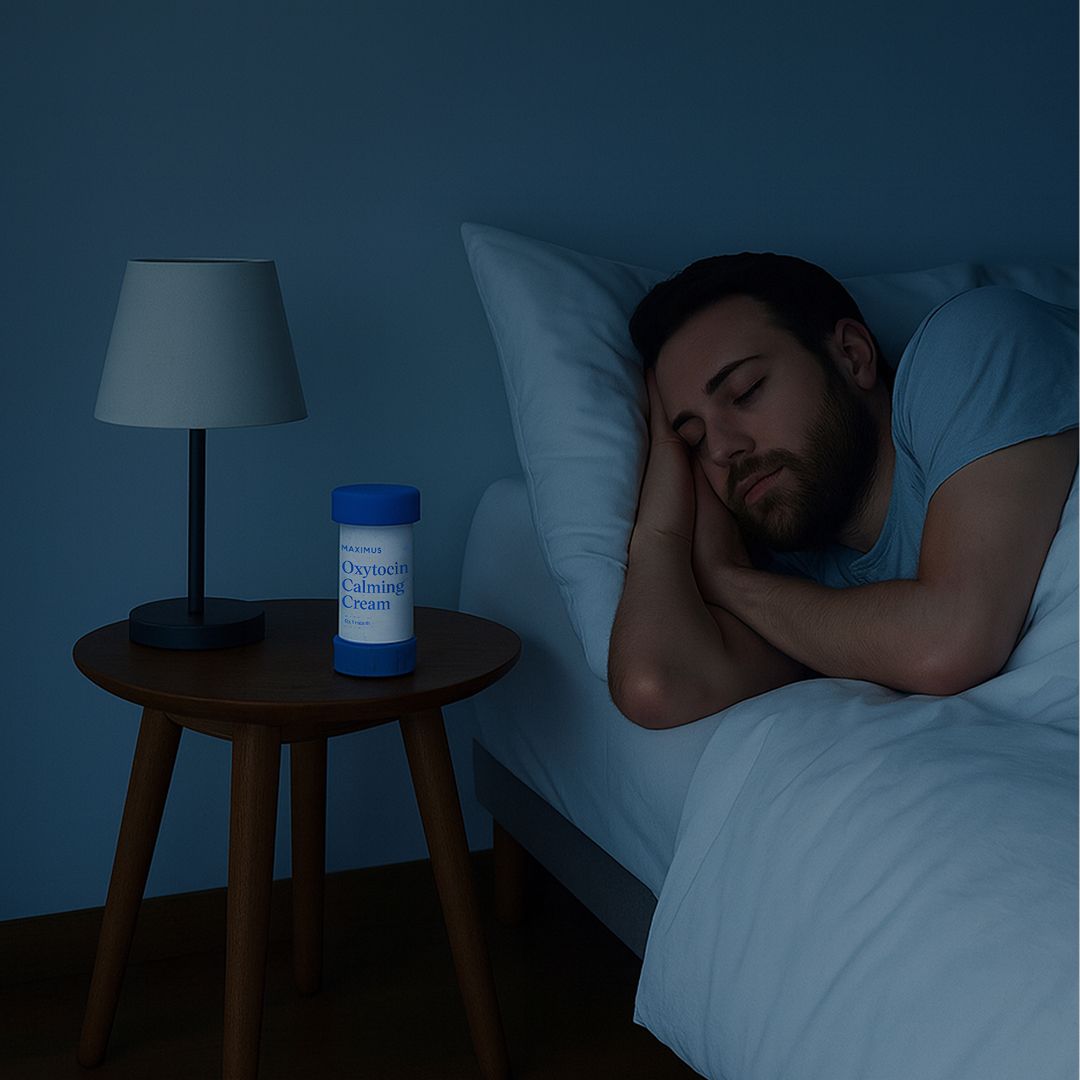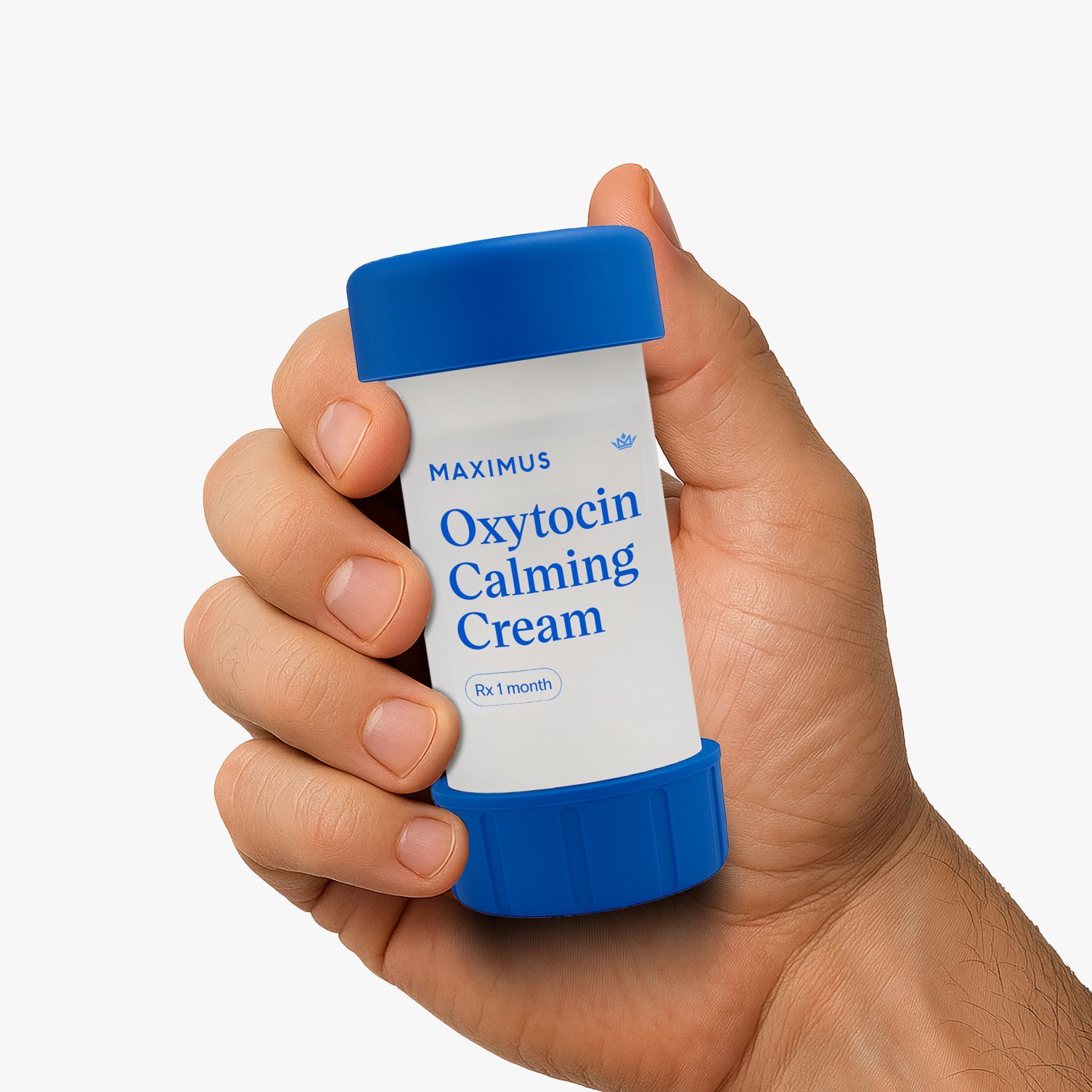Key Takeaways:
- Some of the biomarkers included in a standard male hormone health panel include total testosterone, free testosterone, sex hormone-binding globulin, luteinizing hormone, and follicle stimulating hormone.
- “Normal” testosterone levels vary. According to the American Urological Association, healthy male testosterone levels fall between 450 and 600 nanograms per deciliter (ng/dL), with levels below 300 ng/dL considered low testosterone.
- Free testosterone is the bioavailable, active form of testosterone.
Blood work results are confusing.
When it comes to optimizing your health, understanding your blood work is non-negotiable.
The numbers on your lab report aren’t just statistics — they offer a snapshot of your body’s internal environment.
Whether you're aiming for peak performance, muscle growth, or longevity, knowing what your hormone levels mean and how to optimize them is essential.
In this article you’ll learn key male health biomarkers, what optimal levels should be, and what you can do to improve them.
What biomarkers are measured in common blood work results?
The biomarkers included in a standard male hormone panel typically cover key aspects of testosterone function, reproductive health, metabolism, and liver function.
Most commercial men’s health panels are subpar and only measure total testosterone. If your total testosterone is high, that means you’re healthy right?
That’s like thinking you’re going to win a fantasy football league by drafting one star player.
Total testosterone is just one part of the picture. Other markers are super important to determine how your body is functioning.
Looking at other hormonal markers gives insight into fertility and the mechanisms behind why you might be experiencing symptoms of low testosterone.
Looking at proteins and vitamin levels gives insight into your body’s overall metabolism and performance.
Maximus offers a comprehensive men’s health panel. It includes measurements for:
- total testosterone
- sex hormone-binding globulin (SHBG)
- estradiol, luteinizing hormone
- follicle stimulating hormone
- prostate-specific antigen
- alanine aminotransferase
- vitamin D
Here’s what you need to know about these, and other important results you might come across on your blood work.
What is total testosterone?
Total testosterone is the overall amount of testosterone in your bloodstream, including both bound and unbound forms. It plays a crucial role in muscle mass, energy levels, mood, and overall vitality.
What are optimal total testosterone levels?
- The American Urological Association (AUA) says healthy testosterone levels in men fall within a range from 450 to 600 nanograms per deciliter (ng/dL), with levels below 300 ng/dL classified as low testosterone.
However, there’s no official consensus on this.
Numbers are just numbers without context — you can feel awful and still have testosterone levels that fall in this range.
These testosterone ranges have been extrapolated from all men across all age groups, health statuses, and lifestyles.
For healthy, non-obese men, 600 ng/dL is actually the 57th percentile. Basically, in a room of 100 healthy men, 43 of them would have higher testosterone than you.
For this same hypothetical room of high-performing men, 10 would have higher testosterone levels of 828 ng/dL one would have levels as high as 1047 ng/dL.
Be careful who you’re comparing yourself to.
Testosterone levels may vary from one man to the next and it’s important for symptoms to be taken into account.
How to optimize total testosterone:
You have a few options for optimizing testosterone levels:
- Exercise: Resistance training and high-intensity interval training (HIIT) increase testosterone levels.
- Diet: Zinc, magnesium, and healthy fats support testosterone production.
- Sleep: Aim for 7-9 hours of high-quality sleep.
- Enclomiphene supplementation: stimulates your body’s natural testosterone production — like a shot of espresso at the start of your day
What is sex hormone-binding globulin (SHBG)?
Sex hormone-binding globulin (SHBG) is a protein that binds to sex hormones like testosterone and estradiol in the blood, regulating their bioavailability.
SHBG helps determine how much free testosterone is in your blood.
What are optimal SHBG levels?
- In adult men, normal SHBG levels vary, but typically range from about 10 on the low end to around 70 or so on the higher end. Some labs extend the range beyond these values.
How to optimize SHBG:
Optimizing SHBG is nuanced. SHBG can be influenced by numerous things, some physiological, some pathological.
High SHBG can indicate a health issue, like reduced production of sex hormones, hyperthyroidism, or liver disease
SHBG can also be elevated from a low carb diet or in people who naturally have higher T, and be no cause for concern.
Context is pivotal here. Working with the results of a full blood panel and your doctor directly is key for determining what your SHBG levels means.
What is free testosterone?
Free testosterone is the bioavailable form of testosterone, meaning it’s unbound from SHBG and active in the body.
Free testosterone makes up only 1-3% of total testosterone but it is a very important factor in terms of actual effects.
What are optimal free testosterone levels?
Just like with total testosterone, there aren’t standard, agreed upon levels for free testosterone that apply to all men.
Among men with diagnosed low testosterone, free testosterone levels below 50 picograms per milliliter (pg/mL) may be considered low.
For healthy individuals, the 90th percentile for free testosterone is 180.83 pg/mL and the 99th percentile is 243.17 pg/mL.
These levels come from The National Health and Nutrition Examination Survey conducted by The National Health Centre for Disease Statistics.
How to optimize free testosterone:
Optimizing free testosterone is similar to optimizing total testosterone. Lifestyle habits like diet, exercise, getting enough sleep, managing stress, and moderating alcohol intake can help.
Additionally, you may want to discuss testosterone replacement therapy with your physician.
What is luteinizing hormone (LH)?
Luteinizing hormone (LH) is a hormone that plays a major role in sexual development. In men, LH signals the testes to produce testosterone.
Testing LH levels can be helpful in determining the cause of issues like a low sperm count, infertility, low sex drive, and low testosterone levels.
Measuring both LH and testosterone provides valuable information about the cause of hypogonadism.
If both LH and testosterone are low, that points to primary hypogonadism (generally due to an issue within the testicles).
If LH is high but testosterone is low, that points to secondary hypogonadism (generally due to an issue with the pituitary gland or hypothalamus).
To differentiate, enclomiphene can be used as a challenge test. Enclomiphene is administered and blood levels of testosterone are monitored.
Enclomiphene naturally raises LH levels. If testosterone levels do not rise, that indicates primary hypogonadism. TRT is the only option for these folks, as enclomiphene won’t raise testosterone levels.
What are optimal LH levels?
LH levels in healthy men typically fall between 1.24 and 7.8 international units per liter (IU/L). Don’t panic if you don’t know what IU/L means: it’s a general term used to describe the standard and is hormone-specific.
Low LH levels could indicate a problem with the pituitary gland or hypothalamus, which could potentially lead to low testosterone levels.
High LH levels let you know that LH may not be doing the best job of triggering the body to produce testosterone. You could have an injury to the testicles, abnormal testicle development, a chromosome disorder, or a germ cell tumor.
How to optimize LH levels:
Enclomiphene is the first-time treatment for optimizing LH levels.
Your doctor can inform you of the best approach for optimizing your LH levels given your specific history and the cause of your abnormal lab results.
What is follicle-stimulating hormone (FSH)?
Follicle-stimulating hormone (FSH) is another hormone that plays a big role in sexual development. It works alongside LH to regulate sperm production and testicular function in men.
High levels may indicate testicular dysfunction, which could be due to genetic problems, testicle damage due to alcohol overuse or cancer treatment, hormone treatments, or certain pituitary gland tumors.
Meanwhile, low FSH levels indicate that the hypothalamus or pituitary gland aren’t producing hormones as they should. This could suggest secondary hypogonadism.
What are optimal FSH levels?
Among adult men, FSH levels can vary. A standard range might be from 1.5 to 12.4 mIU/mL, but this can vary depending on the lab. Your blood work results will indicate the range used.
How to optimize FSH levels:
Your doctor can inform you of the best approach for optimizing your FSH levels. This will vary depending on the specific cause. They may suggest lifestyle changes, or work to treat an underlying condition.
What is estradiol?
Estradiol is a sex hormone that plays a role in various aspects of male sexual functioning, including erectile function, spermatogenesis, and libido.
However, excess estradiol can lead to issues like:
- Erectile dysfunction
- Gynecomastia
- Infertility
Low estradiol, on the other hand, can lead to symptoms like
- Reduced sex drive
- Bone loss
- Excess belly fat
What are optimal estradiol levels?
In healthy men, normal estradiol levels may fall somewhere between 10 to 40 pg/mL.
However, this is a general guideline, and ideal levels may vary from person to person as well as depending on what lab was used.
How to optimize estradiol:
Speak to your doctor about how to optimize your estradiol levels. The approach will be different depending on the exact cause.
What is prostate-specific antigen (PSA)?
Prostate-specific antigen (PSA) is a protein produced by the prostate gland.
Elevated levels, detected by a PSA test, may indicate prostate inflammation, benign prostatic hyperplasia (BPH), or even prostate cancer.
A PSA test is commonly used to screen for prostate cancer.
What are optimal PSA levels?
There isn’t a standardized range that indicates a healthy PSA level versus a high PSA level. And it’s also important to keep in mind that PSA levels increase with age. PSA levels may also increase with TRT.
However, a PSA level above 4.0 ng/mL is often considered abnormal and often leads to a referral for further testing, such as a prostate biopsy.
How to optimize PSA levels:
To keep an eye on PSA levels, regular screening is important.
- If PSA levels rise, your doctor may suggest further evaluation. PSA testing should be considered alongside other risk factors like family history, symptoms, etc.
What is alanine aminotransferase (ALT)?
Alanine aminotransferase (ALT) is a liver enzyme that catalyses important processes in the body. It’s mainly found in the liver but also exists in the heart, kidneys, and muscle cells.
ALT levels are also routinely assessed in comprehensive metabolic panels to confirm overall health.
ALT is also routinely used as a biomarker for liver function. ALT blood levels may increase when your liver is damaged.
It’s best practice to monitor ALT levels when taking TRT.
High ALT levels don’t always indicate you have a medical condition. Research shows that fewer than 5% of people with elevated ALT have a liver condition.
However, high ALT levels may indicate some of the following:
- Alcohol-related liver injury
- Fatty liver disease
- Liver cirrhosis
- Hepatitis
- Liver cancer
- Liver injury due to a medication
- Mononucleosis
- High iron
- Genetic conditions
Low ALT levels are rare. If ALT levels are low, this could indicate chronic kidney disease or a deficiency in vitamin B6
What are optimal ALT levels?
Optimal ALT levels vary by laboratory.
- The common reference range is 7–56 U/L (units per liter). ALT levels are typically higher in men compared to women.
How to optimize ALT levels:
Remember, high or low ALT levels don’t necessarily indicate that you have a medical condition. It’s important to get in touch with your doctor if you’ve previously been diagnosed with a liver condition and are experiencing new symptoms.
Likewise, consult with a doctor if you’re experiencing symptoms like belly pain or jaundice, which could indicate liver damage.
Elevated ALT levels may be related to alcohol consumption. If this is the case for you, your physician will likely suggest limiting alcohol consumption. Chronic alcohol use elevates ALT and damages liver function.
On the flip-side, elevated ALT levels may be related to a great workout. Hitting leg day hard is a sure-fire way to freak your doctor out with no other context.
In some cases, your physician may suggest you undergo further testing if your ALT levels are high or low.
What is vitamin D?
Vitamin D is a hormone and nutrient involved in many bodily processes and functions, including testosterone production, immune function and infection control, and bone health. You can maintain healthy vitamin D levels in a few different ways:
- Sun exposure
- Your diet
- Vitamin D supplements
If your vitamin D levels are low (vitamin D deficiency), you might experience symptoms like:
- Weakness
- Depression and other mood changes
- Fatigue
- Bone pain
- Low calcium levels in the blood
- Bone fractures
- Osteoporosis
What are optimal vitamin D levels?
Optimal vitamin D levels are typically 50+ nanograms per milliliter (ng/mL).
Vitamin D levels are often dangerously low, especially in the northern hemisphere where sunlight is low during winter months.
If you’re looking to optimize your vitamin D levels, check out our building blocks supplement, which packs a 10,000 UI punch of vitamin D.
Worried about vitamin D toxicity? Don’t stress. Vitamin D toxicity rarely occurs and is usually coupled with high doses of calcium.
In these cases, vitamin D levels exceed 150 ng/mL.
How to optimize vitamin D levels:
You have a few options for upping your vitamin D intake:
- Get outside: 20-30 minutes of direct sunlight daily is the best source, but its effectiveness depends on factors like skin tone, latitude, and time of year.
- Eat foods that are high in vitamin D: This includes fatty fish, egg yolks, beef liver, mushrooms, and cod liver oil.
- Take vitamin D supplements: Options include vitamin D3 and vitamin D2.
What is gamma-glutamyl transferase (GGT)?
GGT is a liver enzyme. It’s mainly found in the liver, but also in the kidneys, pancreas, and heart. GGT levels can be elevated due to alcohol consumption, fatty liver disease, bile duct disorders, metabolic syndrome, and some medications.
What are optimal gamma-glutamyl transferase (GGT) levels?
Elevated GGT levels can indicate liver dysfunction, alcohol use, or oxidative stress. Optimal GGT levels vary slightly by lab and population, but generally, healthy adult men should have GGT levels between 6–50 U/L.
How to optimize GGT levels
To maintain or reduce GGT levels, prioritize liver health and minimize sources of oxidative stress. Key strategies include reducing alcohol intake, avoiding hepatotoxic medications or toxins, maintaining a healthy weight, and eating a nutrient-rich diet with antioxidants like vitamin C, vitamin E, and N-acetylcysteine (NAC).
Regular physical activity and managing metabolic conditions like insulin resistance or high blood pressure can also help lower GGT. If levels remain high, further evaluation by a healthcare provider is important to rule out underlying liver or biliary disease.
What is hematocrit?
Hematocrit is the proportion of red blood cells in the blood. Red blood cells are important because they carry oxygen throughout the body. Elevated hematocrit levels may increase blood viscosity, which can potentially increase cardiovascular risk. Common causes include dehydration, excess testosterone, blood disorders, or other medical conditions. Low hematocrit levels could be due to anemia, vitamin or mineral deficiencies, or blood loss.
Testosterone therapy can stimulate red blood cell production, which enhances oxygen delivery — but too much red blood cell production can thicken your blood and raise the risk of stroke or blood clots. Regular monitoring is key to maintaining hematocrit in a safe range and optimizing the benefits without increasing cardiovascular risk.
What are optimal hematocrit levels?
Optimal levels vary by sex, age, and altitude, but for healthy adults, the typical range is approximately 40-50% for men.
How to optimize hematocrit levels
To optimize hematocrit, focus on supporting red blood cell production and overall cardiovascular health. This includes ensuring adequate intake of iron, vitamin B12, folate, and copper, which are essential for erythropoiesis. Regular exercise, especially aerobic training, can naturally elevate hematocrit by stimulating erythropoietin. However, excessive endurance training or dehydration can falsely elevate levels. Avoiding smoking and managing conditions like sleep apnea or testosterone imbalances (which can increase hematocrit) are also important. If hematocrit is consistently high or low, it should be evaluated with a healthcare provider to identify underlying causes.
What is creatinine?
Creatinine is often used to assess kidney function. Creatinine is a waste product produced when some muscle tissue breaks down with muscle use. The kidneys filter creatinine from the blood and excrete it in urine. Higher creatinine levels may indicate impaired kidney function, but can also be normal in muscular individuals.
What are optimal creatinine levels?
Normal blood creatinine levels typically range from 0.7 to 1.3 mg/dL in men, though slight variations depend on age, muscle mass, and hydration status.
How to optimize creatinine levels
To support creatinine levels, it's important to maintain kidney function. This includes staying well-hydrated, limiting high-sodium diets if advised, and avoiding excessive use of NSAIDs. Managing conditions like diabetes and high blood pressure is critical, as both can impair renal function. While creatinine levels naturally correlate with muscle mass, sudden spikes should be investigated, especially if accompanied by symptoms like fatigue, swelling, or changes in urination.
Know your blood work: Improve your health
Remember: blood work results are more than just numbers — they offer a roadmap to optimizing your performance, energy, and longevity.
Whether it's dialing in your testosterone levels, keeping estrogen in check, or ensuring your liver and prostate are functioning optimally, small changes can lead to major improvements in how you feel and perform.
Get tested regularly, track your progress, and make adjustments as needed.





